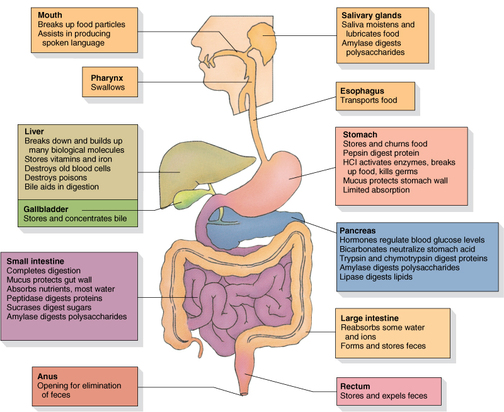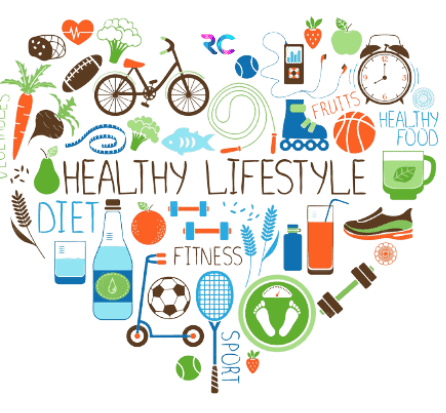
The Digestive System: Unraveling the Miracle of Nutrient Processing
The digestive system, often referred to as the body’s “processing plant,” is a marvel of biological engineering. It plays a fundamental role in breaking down food into its constituent nutrients, allowing the body to absorb essential elements for energy, growth, and overall health. In this comprehensive exploration, we delve into the intricacies of the digestive system, its anatomy, functions, the digestive process, and the critical role it plays in sustaining life.
Anatomy of the Digestive System
The digestive system is a complex network of organs and tissues that extends from the mouth to the anus. Key components of this system include:
1. Mouth
Digestion begins in the mouth, where enzymes in saliva, such as amylase, start breaking down carbohydrates. Chewing initiates the mechanical breakdown of food, forming a semi-liquid mixture known as chyme.
2. Esophagus
The esophagus is a muscular tube that transports food from the mouth to the stomach through a process called peristalsis. It prevents food from entering the windpipe (trachea) through the action of the epiglottis.
3. Stomach
In the stomach, food mixes with gastric juices containing hydrochloric acid and digestive enzymes like pepsin. This acidic environment aids in breaking down proteins and prepares food for further digestion in the small intestine.
4. Small Intestine
The small intestine is where most nutrient absorption occurs. It consists of three segments: the duodenum, jejunum, and ileum. Here, digestive enzymes from the pancreas and bile from the liver (via the gallbladder) further break down and emulsify fats, while specialized cells on the intestinal walls absorb nutrients.
5. Large Intestine (Colon)
The large intestine primarily absorbs water and electrolytes from undigested food, forming feces. Beneficial bacteria in the colon play a crucial role in fermenting undigested carbohydrates and producing vitamins like B and K.
6. Liver
The liver, a vital organ, produces bile that is essential for the digestion and absorption of fats. It also detoxifies the blood, stores glucose as glycogen, and metabolizes nutrients.
7. Gallbladder
The gallbladder stores and releases bile produced by the liver in response to fatty foods. This bile helps emulsify fats, increasing their surface area for efficient digestion by enzymes.
Functions of the Digestive System
The digestive system serves several key functions essential for the body’s survival and overall well-being:
1. Ingestion
The process of taking in food through the mouth.
2. Mechanical Digestion
The physical breakdown of food into smaller particles through chewing (in the mouth) and mixing (in the stomach).
3. Chemical Digestion
The enzymatic breakdown of complex nutrients into simpler forms that can be absorbed. This process occurs throughout the digestive tract but is especially important in the stomach and small intestine.
4. Absorption
The uptake of nutrients, such as amino acids, fatty acids, vitamins, and minerals, by specialized cells in the small intestine for transport into the bloodstream.
5. Motility
The coordinated, rhythmic contractions of smooth muscles in the digestive tract, known as peristalsis, which move food and digestive products along the digestive tract.
6. Secretion
The release of digestive enzymes, acids, and other substances by various digestive organs, including the salivary glands, stomach, pancreas, and liver.
7. Storage and Elimination
The temporary storage of food in the stomach and nutrients in the liver (as glycogen) and the elimination of indigestible waste in the form of feces.
The Digestive Process
Digestion is a meticulously coordinated process involving both mechanical and chemical aspects:
- Ingestion: Food is introduced into the mouth.
- Chewing and Salivation: Food is mechanically broken down by chewing, while saliva, rich in enzymes like amylase, begins the chemical digestion of carbohydrates.
- Swallowing: The tongue pushes the chewed food to the back of the mouth, initiating the swallowing reflex. The epiglottis prevents food from entering the windpipe.
- Peristalsis: The esophagus propels food to the stomach through rhythmic, wave-like contractions known as peristalsis.
- Stomach Digestion: In the stomach, food mixes with gastric juices, forming chyme. Protein digestion begins with the action of pepsin, and the acidic environment aids in chemical breakdown.
- Small Intestine Digestion and Absorption: Chyme enters the small intestine, where pancreatic enzymes and bile further break down nutrients. Villi and microvilli, tiny finger-like projections in the small intestine, increase the surface area for nutrient absorption.
- Nutrient Transport: Nutrients are absorbed into the bloodstream and transported to cells throughout the body, providing energy and supporting various bodily functions.
- Large Intestine and Elimination: Undigested food moves to the large intestine, where water and electrolytes are absorbed, and feces are formed. Beneficial gut bacteria aid in the fermentation of certain carbohydrates.
Digestive Disorders and Health Implications
A well-functioning digestive system is crucial for overall health. Various disorders, such as gastroesophageal reflux disease (GERD), irritable bowel syndrome (IBS), celiac disease, and inflammatory bowel disease (IBD), can disrupt the digestive process and lead to significant health issues. Maintaining a balanced diet, staying hydrated, managing stress, and seeking medical attention for digestive concerns are essential steps in supporting digestive health.
Conclusion
The digestive system is a remarkable and intricate network of organs and processes that transforms food into the nutrients essential for life. From the initial ingestion of food in the mouth to the absorption of nutrients in the small intestine, every step in the digestive process is finely tuned to ensure the body receives the energy and essential elements it needs to function optimally. Understanding the anatomy and functions of the digestive system is not only fascinating but also crucial for maintaining overall health and well-being.



